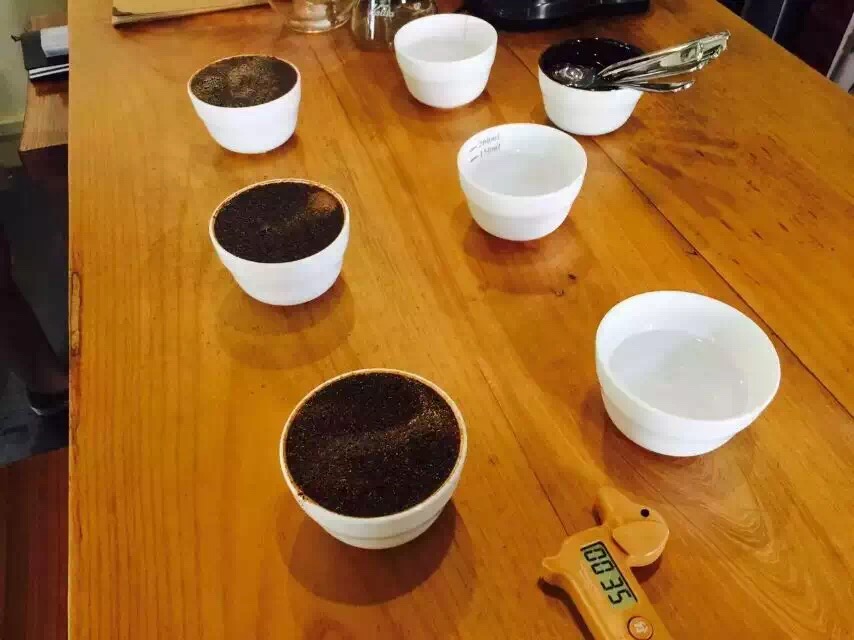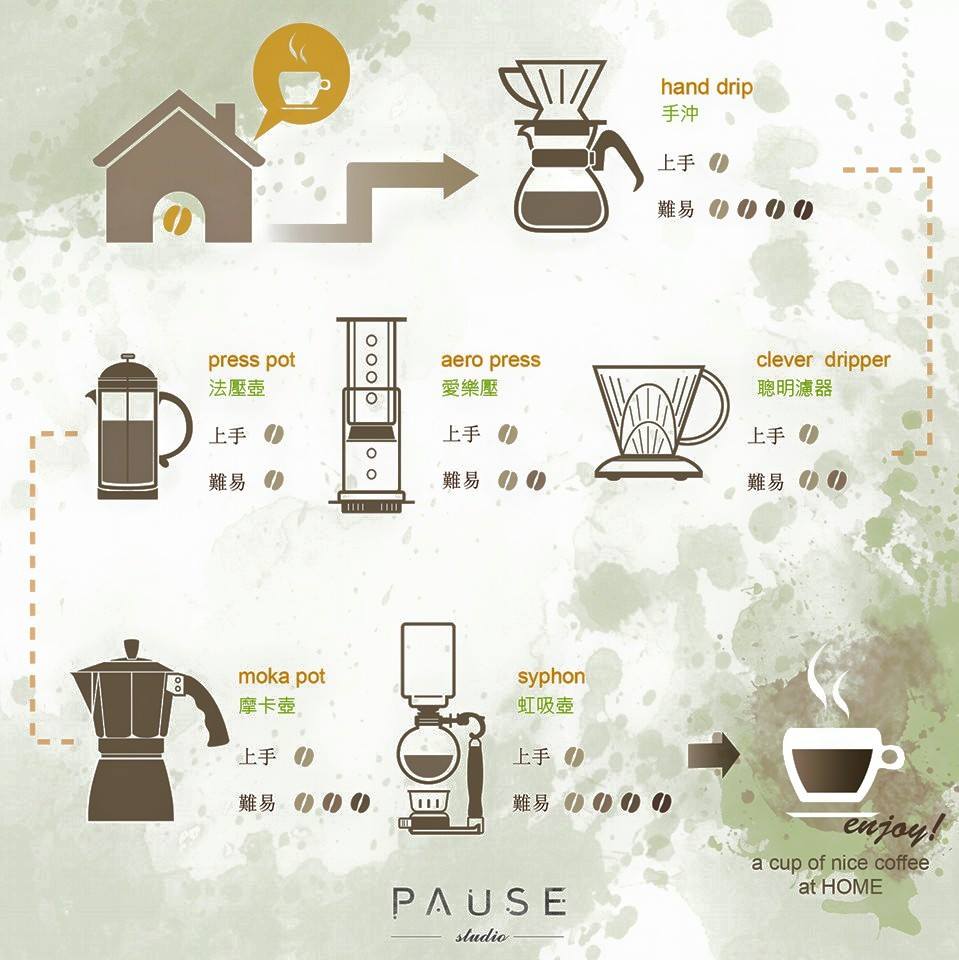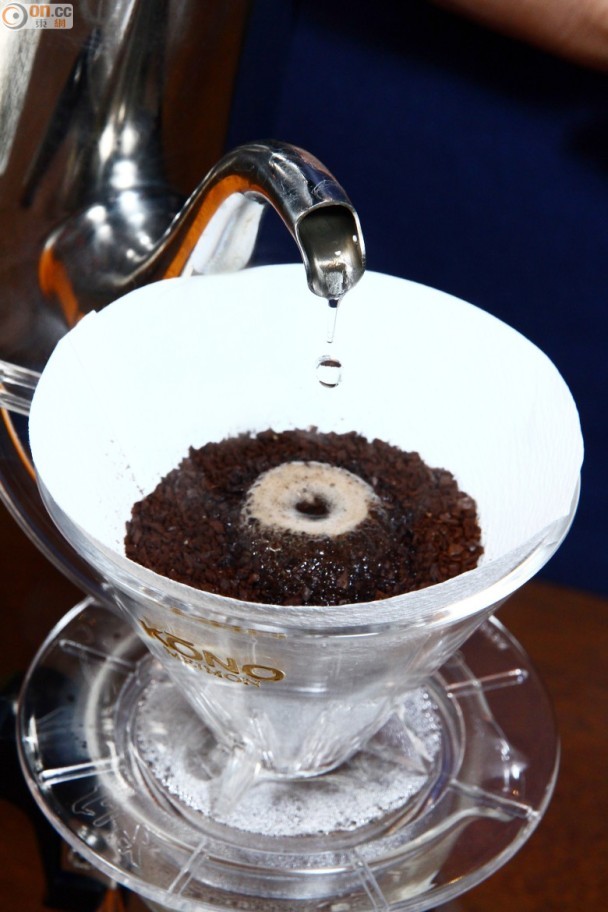The step of confirming the best taste of coffee-- "cup test"

The quality of coffee is judged by the sense of taste, which is called the "coffee cup test", while the person who evaluates it is called the "appraiser". The method is to pour 10 grams of coffee powder into a warm coffee cup, then pour 100 C boiled water into the cup, stir thoroughly with a spoon, let the powder precipitate, and then remove the foam from the surface. First of all, identify its aroma, and then put the coffee in the mouth to determine the sour, bitter, sweet procedure and whether there is a peculiar smell. After the test, gargle and record the results immediately, and then continue the next cup of test.
All kinds of cup measurement methods
"Cup Test" (Cup Testing. Or Cupping, Tasting, Cup Tasting, etc.) there are a variety of methods, because there are no unified rules in the world, so the producing country, consumer country, enterprise or individual can choose the appropriate cup testing method according to their own situation. But generally speaking, the approach is derived from the "Brazilian style".
So, what is the Brazilian cup test?
First of all, grind the roasted coffee moderately, put 10 grams into the cup and inject 150 milliliters of hot water. The roasting degree of coffee is about 65% of the value of "caramelization tester" (commonly used terms for coffee), which is about the degree of "cinnamon roasting" (light or moderate roasting in the United States). "Agtron" is the main roasting index used in the United States, measuring the roasting degree with a special colorimeter.
Then, stir the coffee powder soaked in hot water with a spoon to smell the fragrance. The next step is to remove the foam, scoop a spoonful of coffee liquid into your mouth with a test spoon, sip it as loudly as possible by drinking hot soup, then put the coffee liquid against the front teeth from your tongue to judge its smell, let the coffee liquid circle around your mouth, chew its taste, spit the coffee liquid in your mouth into the garbage basket, then wash the spoon in warm water and start the cup test. Although this method is not very elegant, it can confirm the smell. (note: don't jump to conclusions after just one cup of test. it's best to repeat the test several times to see what it tastes like when it's hot, when it's warm, when it's cold, and when it's reboiled. Some coffee will taste sour when it gets a little cold.)
Coffee is graded according to this series of sensory reviews, based on "Soft", "Hard" and "iodine". "mild" refers to the soft and elegant sour taste and strong mellow, "difficult" refers to the astringent taste like persimmon, "iodine taste" is the taste of carbonic acid and so on.
A good cup tester must be able to focus firmly and clearly on the task at hand. Taste is a very short-lived feeling, and a variety of subtle aromas may pass through your upper jaw at the same time. Identifying and describing aromas that are meaningful to you in some way is a challenge to your ability and attention. Tasting is a very personal taste experience and memory, you can use your previous taste experience to understand and evaluate a new taste. Sometimes, a diligent cup tester will collect some useful adjectives that can be used to compare and compare the taste of coffee. Some key words that define the characteristics of coffee can be very useful when comparing coffee.
Acidity: this word can be used to describe the lovely brightness and sharpness of coffee. Acidity is usually expressed in the form of some fruit and floral aromas, which can be strong or mild, round or sharp, elegant or rough, or tend to be between them. Generally speaking, it is best to evaluate the acidity of coffee when it is slightly cool or slightly hot. By comparing coffee from Sumatra and Kenya, it is easy to understand what acidity is.
Mellow: sometimes referred to as "taste". Mellowness refers to the texture of coffee in the mouth, or the feeling of weight, which is difficult for beginners to distinguish. Mellowness is usually reminiscent of the thickness and consistency of coffee, which embodies the physical properties of coffee. Compared with coffee from Sulawesi and Mexico, the concept of mellowness is easy to understand.
Sweetness: one of the most important elements in coffee. Sweetness is usually used to define "very good" and "good". Even, many strong sour coffee will improve the balance and finish because of its good sweetness.
Yu Yun: (or Huigan, aftertaste) is very important in evaluating the overall quality of coffee, it will stay for a while after the coffee liquid is swallowed. Like a good story, a great cup of coffee needs a perfect ending. The perfect return means that after the coffee is swallowed, the coffee is clear, sweet, refreshing and stays in the mouth for 10-15 minutes with aroma. A perfect Huigan will clearly reflect the main flavor of coffee.
The purpose and function of coffee cup test:
1. Through scientific methods to test the quality of coffee, so as to choose your favorite coffee.
2. For coffee beans with the same place of production but different roasting methods, cup test can be used to determine which baking method and roasting degree is the best.
3. If the baking test is the same for different producing areas, the cup test can be used to determine which producing area has the best coffee beans.
The cup measurement tables of professional institutions SCAA and COE are more detailed, in addition to wet fragrance, alcohol thickness, flavor, acidity, sweetness, aftertaste, but also to "dried incense" (Fragrance), "consistency" (uniformity), "cleanliness" (clean cup), "taste" (mouth feel), "overall impression" (overall), "stain (taint)" and "defect" (fault).
Important Notice :
前街咖啡 FrontStreet Coffee has moved to new addredd:
FrontStreet Coffee Address: 315,Donghua East Road,GuangZhou
Tel:020 38364473
- Prev

Share 6 unplugged, simple and practical coffee appliances
Make a good cup of coffee."No matter how busy I am, I still want to have a cup of coffee with you." Does this familiar phrase often appear in your life? But what about in these busy times: no matter how busy you are, you can still make a good cup of coffee? Pause studio shares 6 simple and practical appliances that do not need to be plugged in! Hand Drip Recommended: ★★ ★★ Hand
- Next

Japanese Coffee sharing skills
Hand-held coffee is the designated action of every favorite coffee fan, but how to do it there? I would like to share your information about Japanese coffee, Japanese coffee and hand skills. I hope I can give you a reference! Hong Kong shops using hand-made coffee generally have only four to five types of coffee beans from My Little Coffee:Coffeehouse Roasters in Tsim Sha Tsui.
Related
- What is the meaning of lactic acid fermentation with coffee bean treatment?
- How to judge the state of foam by sound?
- How does the latte pull out the unicorn pattern? Come to get for a little trick to improve the flower pull!
- Will flower pulling affect the taste of the latte?
- Do you know the history of coffee?
- The difference between honey treatment and sun washing what is raisin honey treatment?
- What kind of milk can a novice use to make coffee foam to keep the foam longer? The correct method and skills of milking tutorial sharing
- Why do washed coffee beans taste sour? Flavor characteristics of washed Coffee
- Introduction to the skill of how to practice the size and height of water injection around the circle of hand-brewed coffee
- How do beginners practice coffee flower drawing from scratch?

